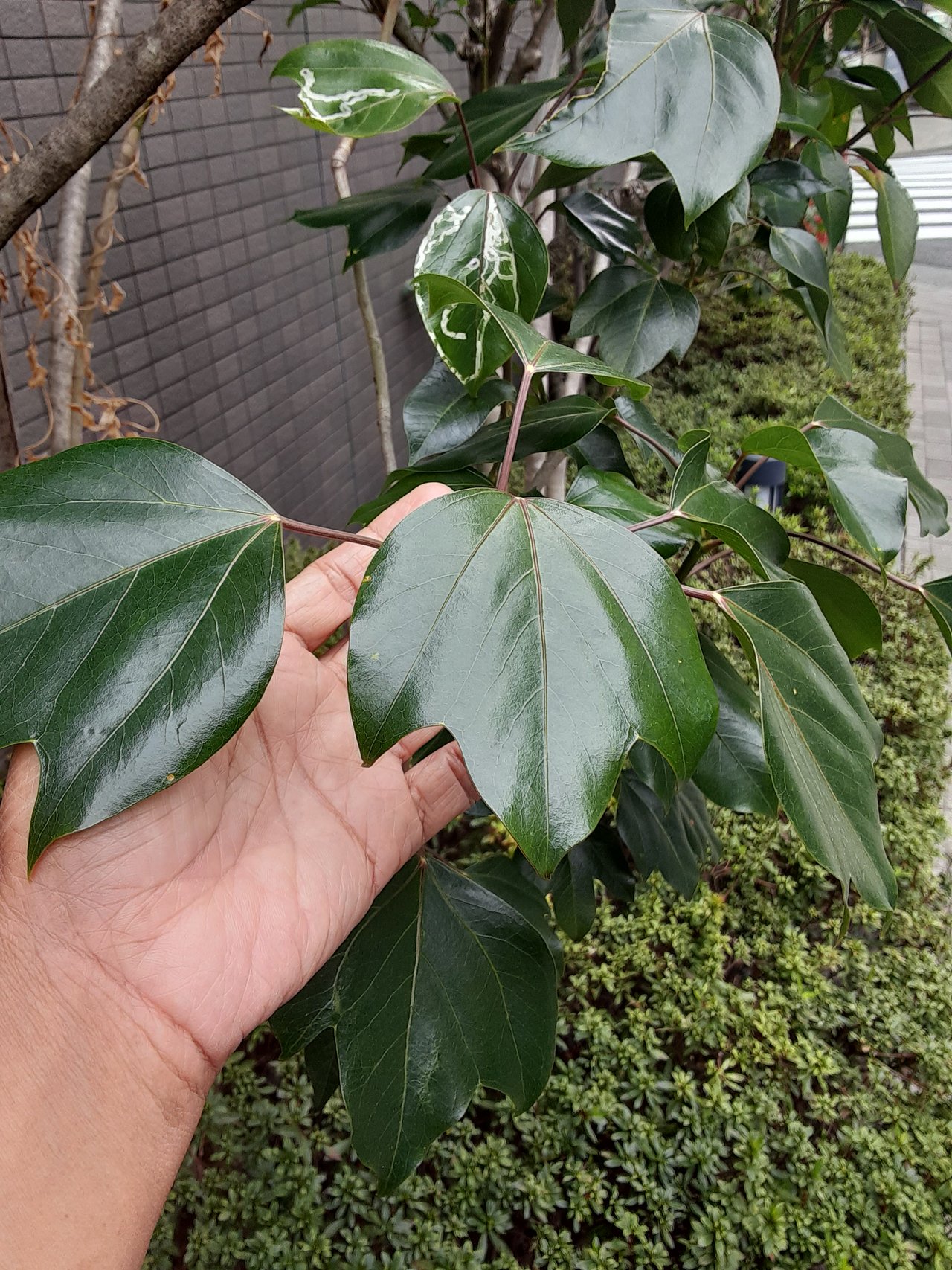Dendropanax morbiferus, a tree prized for its fall foliage, has compound palmately divided leaves with serrated edges that turn a brilliant golden yellow in autumn
1 comment

Dendropanax morbiferus, also known as the Hwangchil tree or Korean angelica tree, is a fascinating plant native to East Asia, particularly South Korea, Japan, and parts of southwestern Brazil. It's a medium-sized tree, reaching heights of up to 15 meters (50 feet), and is prized for its beautiful golden yellow fall foliage and potential medicinal properties.
The leaves of Dendropanax morbiferus are a key feature contributing to its aesthetic appeal. These leaves are typically:
- Compound: Unlike simple leaves with a single blade, Dendropanax morbiferus boasts compound leaves. This means each leaf is further divided into smaller leaflets attached to a central stalk.
- Palmately compound: Specifically, the leaves are palmately compound, meaning the leaflets radiate outwards from a single point at the tip of the petiole (leaf stalk) like fingers on a hand.
- Elliptical leaflets: The individual leaflets are elliptical in shape, meaning they are elongated with rounded ends, similar to an oval but slightly narrower.
- Serrated edges: The margins of the leaflets often have a serrated or toothed edge, adding a textural element to the foliage.
- Vivid green: Throughout the growing season, the leaves showcase a vibrant green color, adding a lushness to the tree's appearance.
Beyond aesthetics, the leaves of Dendropanax morbiferus have potential medicinal applications. Studies have shown they contain various bioactive compounds, including antioxidants and anti-inflammatory agents. These compounds are currently being researched for their potential benefits in managing various health conditions, though more research is needed to confirm their efficacy.
Here are some additional interesting facts about the leaves of Dendropanax morbiferus:
- Seasonal change: While the leaves are green throughout the growing season, fall brings a stunning transformation. They turn a brilliant golden yellow, adding a vibrant splash of color to the autumn landscape.
- Deciduous: Dendropanax morbiferus is a deciduous tree, meaning it sheds its leaves in the fall before winter. This allows the tree to conserve energy during the colder months.
- Leaf size: The size of the compound leaves can vary depending on the age and health of the tree, but they typically range from 10 to 30 centimeters (4 to 12 inches) in diameter.
The combination of their attractive palmate structure, vibrant green color, and stunning fall transformation makes the leaves of Dendropanax morbiferus a significant contributor to the overall beauty of this unique tree.
Ref.:
 |  |
Comments